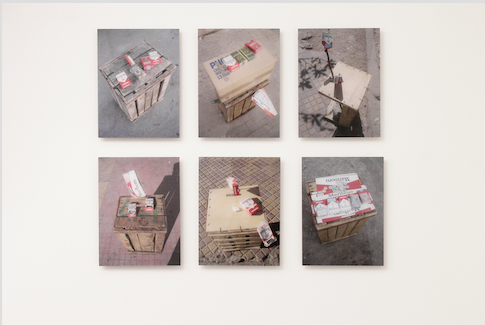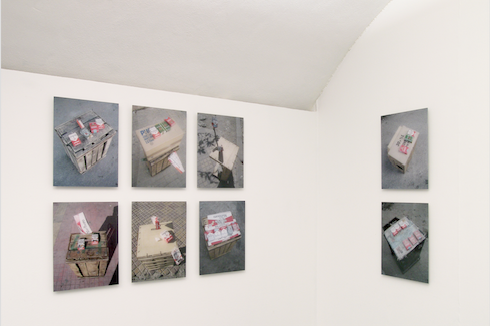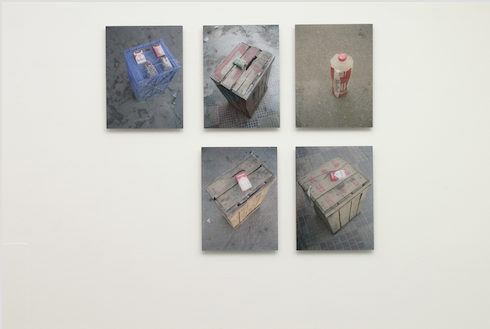Papiers Pliés, 2007
Papiers Pliés
The work features folded paperworks originating from a textile factory and recycled by snack vendors as packaging for chickpeas, peanuts and sunflower seeds and found by the artist in the Pedicaris forest in Tangier, Morocco, a constant source of inspiration and subject matter for the artist.
DETAIL, 2005
DETAIL
|
|
The Inhale and Exhale of Economics (One euro = $1.20 = ten dirhams) Ten by two neatly packed tobacco Exhale From the port duty-free Inhale Just outside the port on a street corner Inhale At a cafe ten minutes away B sells Exhale Expenses at the cafe B works out of eight hours a day: Exhale A has been in prison 21 times |










